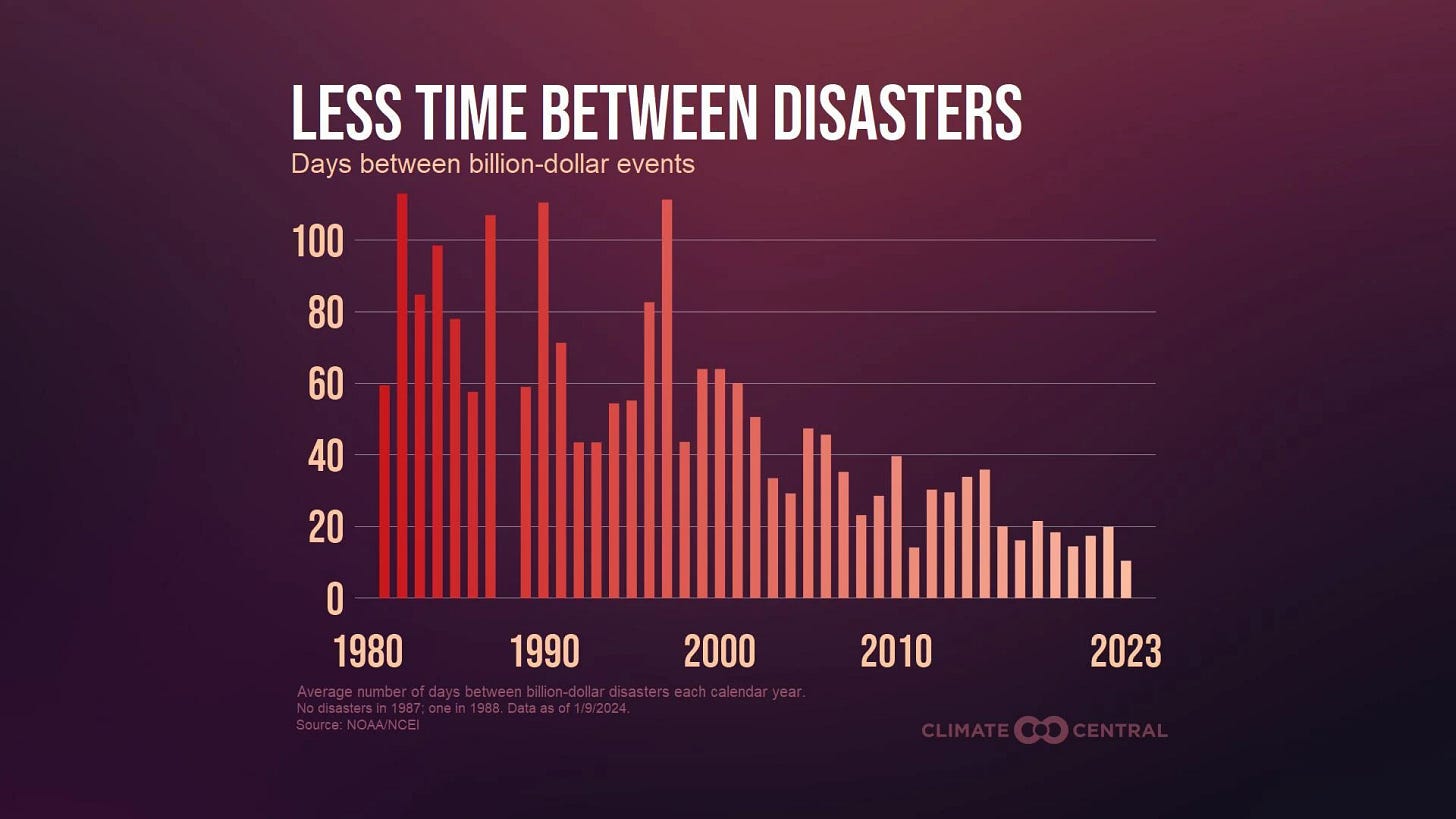In the 1980s, there was an average of 82 days between major natural disasters. Now, there’s an average of just 12 days in between.1 They’re also getting more deadly and more costly.
Ok hold on, stay with me. If you hold your tension in your chest, now’s a good time to put a hand there and just breath for a moment. If you’ve recently purchased a weighted stuffed dragon from the children’s section at Target, that might help too.

At Habitat’s U.S. Executive Summit last month in Long Beach, California I learned that more than a third of the Habitat affiliates across the country are actively engaged in disaster recovery. Our hosts shared the daunting and incredible recovery work being done through Los Angeles County and the San Gabriel Valley, where the destruction was so complete that for every one home repair requested, five complete rebuilds were needed.
And yet, as Elizabeth Sawin says, we can multisolve in the aftermath of disaster. The average age of the homeowners being helped by Habitat LA and SGV is 72 years old. Most had lived in their homes for thirty years or more before they were destroyed by the fires. Now, as they look to rebuild, many families are including accessible dwelling units on the property which would allow their adult children to afford to move back to their hometown and will assist with a graceful aging-in-place strategy. Multisolving at its finest.
Despite my predisposition for imagining the worst, I often think “that couldn’t happen here.” Sure, sometimes upstate NY will get a bad snowstorm — though that’s become increasingly rare. We’ve been impacted by tornadoes and even tropical storms and hurricanes, but not to the extent of other parts of the country. Yet almost exactly a year ago, I opined about climate catastrophe and the changing weather patterns here.
Climate apocalypse novels and action
Last summer I read The Light Pirate, a novel set during the many decades of a growing climate apocalypse. Despite its setting, I actually don’t think it was about climate fatalism. I think it was, as all novels are, about the human condition and how we adapt and change. I think it was a call to action.
Consider this my wake-up call to lean into disaster preparedness both at Habitat and at home. Habitat aims to be a driver of resiliency and recovery in places threatened or impacted by disaster. Soon enough, that will be almost every place. I’m looking into citizen preparedness courses too — there’s one at the library next week that I can’t make, but I’d love to be more equipped to be a community helper in times of need. Similarly, I’m following Cramming for the Apocalypse for
’s cheeky blend of preparedness and community-building tips and apocalyptic fiction recs.But wait, all is not lost! Here’s a gift link to an opinion piece by Bill McKibben that will give you just the boost you need: “I’m a Climate Activist. I’m Not Giving Up Just Yet.”
https://www.climatecentral.org/climate-matters/billion-dollar-disaster-seasons-2024





